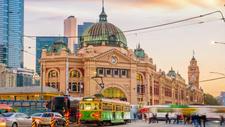- Home
- Arts Design
- Blog
- Why is there so much graffiti in Melbourne
Why is there so much graffiti in Melbourne

Jessie Leong @flickr
There are several reasons why there is a significant amount of graffiti in Melbourne:
- Street art culture: Melbourne has a vibrant street art scene, which has been growing since the 1980s. The city’s laneways and alleys have become famous for their colorful, intricate murals and graffiti pieces, which attract both local and international artists.
- Lack of legal wall space: While the city has designated some areas for street art, there is still a significant shortage of legal wall space. This means that many artists feel compelled to create their work in unauthorized locations.
- Social and political expression: For some artists, graffiti is a way to express their political and social views. In Melbourne, graffiti has been used to highlight issues such as homelessness, gentrification, and climate change.
- Tourist attraction: Melbourne’s street art has become a major tourist attraction, drawing visitors from around the world who come to see the city’s murals and graffiti pieces.
- Tolerance and acceptance: Melbourne is known for its tolerant and accepting culture, which has helped to foster a positive attitude towards street art. While not all graffiti is legal or welcome, there is a general understanding that street art is an important part of the city’s cultural identity.
History of graffiti in Melbourne
The history of graffiti in Melbourne can be traced back to the 1960s and 1970s, when the city’s railway network became a popular target for taggers. The first known graffiti writer in Melbourne was a teenager known as “Jive” in the mid-1970s, who tagged trains and walls with his name.
In the 1980s, graffiti started to gain more recognition as a legitimate art form in Melbourne. Local artists began to experiment with different styles and techniques, including stencils and murals, and started to transform the city’s laneways and alleys into outdoor galleries.
In the 1990s, the City of Melbourne began to commission murals and street art projects as part of its urban renewal efforts. This led to the creation of some of the city’s most iconic street art, such as Hosier Lane and Union Lane.
In the 2000s, Melbourne’s street art scene continued to grow, with more artists experimenting with different styles and techniques. Social and political issues, such as climate change and the war in Iraq, also became common themes in graffiti.
Today, Melbourne is considered one of the world’s leading cities for street art, and its laneways and alleys have become a major tourist attraction. The city has also developed policies and guidelines to manage and support its street art culture, including the provision of legal wall spaces for artists to create their work.
Melbourne street art locations
Melbourne has a rich and vibrant street art scene, with numerous locations throughout the city where you can see stunning murals, stencils, and graffiti pieces. Some of the most popular street art locations in Melbourne include:
- Hosier Lane: Located in the central business district, Hosier Lane is one of Melbourne’s most famous street art locations. The narrow laneway is covered in colorful murals, stencils, and graffiti pieces that change regularly.
- Union Lane: Just a short walk from Hosier Lane, Union Lane is another popular street art spot that’s covered in intricate murals and graffiti pieces.
- AC/DC Lane: Named after the iconic Australian rock band, AC/DC Lane is a laneway in the heart of Melbourne that’s covered in street art, including a large mural of the band’s lead singer, Bon Scott.
- Blender Lane: Located in the suburb of Fitzroy, Blender Lane is a popular spot for street artists to create and showcase their work.
- Caledonian Lane: Another laneway in the central business district, Caledonian Lane is covered in street art that ranges from abstract pieces to political murals.
- Duckboard Place: This narrow lane in the heart of the city features colorful murals and stencils that are constantly changing.
- Degraves Street: This pedestrian-only laneway in the central business district is famous for its cafes and restaurants, as well as its street art.
- Centre Place: Just a few steps away from Degraves Street, Centre Place is another popular spot for street art, with colorful murals and graffiti pieces covering the walls and alleyways.
These are just a few of the many street art locations in Melbourne. Exploring the city’s laneways and alleys is a great way to discover hidden gems and see some of the best street art that the city has to offer.
Related Post

State Library Victoria

Sustainable Colony Gardens in Copenhagen, Denmark

Flinders Street Railway Station

Melbourne’s Famous Federation Square

10 Trending Things every Office should have!

Ikea must-haves for Small Spaces!

Law Firm Office Building






